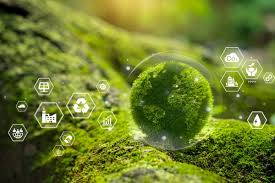A UN report indicates that waste management-related expenses could decrease from $640 billion to $270 billion by 2050, while simultaneously contributing a $108 billion gain to the global economy.
Waste is a complex global issue that affects all aspects of society, from the environment to public health and the economy. It consists of discarded materials that no longer have an immediate use for those who generated them. The rise in population and consumption has significantly contributed to the increase in waste generation worldwide.
There are different types of waste, including organic waste, plastics, paper, glass, metal, electronics, among others. The way we handle this waste can have profound impacts on the environment and human health. For example, improper waste disposal can lead to soil, water, and air pollution, posing risks to wildlife and humans.

Moreover, waste can contribute to greenhouse gas emissions, which in turn can worsen climate change. Proper waste management is essential to mitigate these negative impacts. This includes practices such as recycling, composting, controlled incineration, and waste reduction through measures like reuse and limiting excessive consumption.
Awareness of waste-related issues has grown in recent decades, leading to initiatives and policies aimed at addressing the problem more effectively. However, much remains to be done to comprehensively and sustainably tackle waste-related challenges. This requires not only individual action but also global cooperation and effective policies to promote more responsible consumption and disposal practices.
The circular economy represents a systemic approach to addressing global challenges such as climate change, biodiversity loss, waste management, finite resource use, and pollution. It proposes a complete transformation of our production and consumption system, carefully considering how we manage resources, manufacture, use, and recycle products.
Only by rethinking these aspects can we establish a thriving circular economy that seeks to benefit everyone within the planet’s ecological limits. This approach enhances system resilience, providing the necessary tools to tackle climate change and biodiversity loss while also addressing fundamental social needs.
In a circular economy, material cycles mimic patterns observed in ecosystems, where there is no waste, as every discarded item is repurposed to create a new product. Harmful substances are eliminated, and waste streams are separated into biological and technical cycles.
In this system, it is crucial not only to ensure proper recycling of materials but also to maintain high quality in products, components, and raw materials. For instance, the mining industry is changing its approach to discarding steel and rubber from trucks used in its operations.
Similar to raw materials and products, in the circular economy, the goal is to maximize the utility of energy, primarily driven by renewable sources. A recent example of this approach is the initiative by electric vehicle manufacturers to repurpose discarded batteries, giving them a second life as energy storage systems.
In summary, the circular economy is not only beneficial for businesses but also for people and the environment, offering a sustainable and comprehensive solution to the global problems we face.
Without the implementation of protective measures, the global cost of managing municipal solid waste is projected to reach $640.3 billion by 2050, according to the Global Waste Management Outlook report, developed by the UN in collaboration with the International Solid Waste Association, a Netherlands-based organization focused on waste studies and research.
After analyzing different scenarios, researchers concluded that by implementing waste generation control measures, associated costs could significantly decrease, dropping from $640.3 billion to $270.2 billion by 2050. Additionally, adopting the circular economy model, which aims to extend product lifespans, could result in a $108.1 billion gain for the global economy.
The report highlights that without the adoption of effective measures, global waste production could reach 3.78 billion tons by 2050, representing a 56% increase compared to 2020 levels when 2.12 billion tons of waste were generated.
Beyond economic impacts, the UN report emphasizes that excessive waste production, transportation, and processing significantly contribute to climate change due to high greenhouse gas emissions. Improper waste disposal also leads to biodiversity loss, as soil contamination harms fauna and flora, affecting local communities.
At the current rate of waste production, the environmental and climate impacts projected for 2050 could severely compromise the quality of life and public health, with a 91% increase in greenhouse gas emissions. However, by adopting a controlled waste generation approach, emissions could be reduced by up to 69%, potentially reaching a negative 159% rate with the full implementation of the circular economy.
In South America, only about 5% of the waste produced in 2020 was sent for recycling, while more than 60% was directed to landfills. The remaining portion was categorized as uncontrolled disposal, including waste incineration. By comparison, in Europe, more than 40% of waste is recycled. The report highlights that while recycling is an important practice, preventing waste generation from the outset is a more effective approach to waste management.
Waste-to-energy plants, which convert waste into electricity through incineration, are already widely used in more industrialized European and Asian countries, representing about 42% of waste processing in Northern Europe. However, this method has not yet been adopted in South America.
The report identifies the lack of recognition of the urgency of waste generation as one of the main barriers to action by world leaders. It also emphasizes the need for more data, funding, and knowledge to drive the circular economy agenda and improve understanding of the link between waste and climate change. The report concludes that transitioning toward a circular economy and a zero-waste approach is essential for a sustainable, secure, and accessible future.

